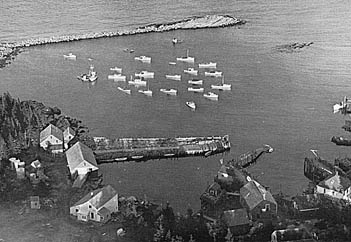|
In Maine and elsewhere, fishing
communities have seen their social fabric stressed to the breaking point over the last twenty years Ð largely the result of mismanagement, many claim. This past fall, after two decades of federal regulations, the New England Fishery Management Council (NEFMC) held a series of ten informal hearings aimed at assessing social impact of those regulations on fishing communities.
From Riverhead, New York to Ellsworth, Maine, fishermen and their families told NEFMC representatives of the hardships regulations have caused them. Common themes included the horror of discarding Ð throwing marketable fish over the side dead because of regulatory trip limits; losing the next generation of fishermen because of the instability of the industry, and inability to keep crew due to limited fishing time.
Regional issues varied. South of Cape Cod, fishermen felt the impact of limited days at sea.
|
 |
|
North of the Cape communities were more severely impacted by regulatory closures, and in downeast Maine, where the groundfishing industry has dwindled to a few boats, fishermen expressed concern about the possibility of losing their permits.
At the last hearing, held in Ellsworth, Maine, on December 7, downeast Maine fishermen, vented their frustration.
"Why are you coming to us now?" Deer Isle lobsterman, Leroy Bridges asked Paul
|
Howard, executive director of the NEFMC. "Why wasn't this looked at when you were annihilating these communities?"
"These are new requirements," said Howard, claiming that the council had previously been focused on stock rebuilding.
New Bedford fishermen, Rodney Avila, had his own view of the hearings. "They're covering themselves," he said. "They're late with this but they'll say they were busy with other things."
continue
|
|

